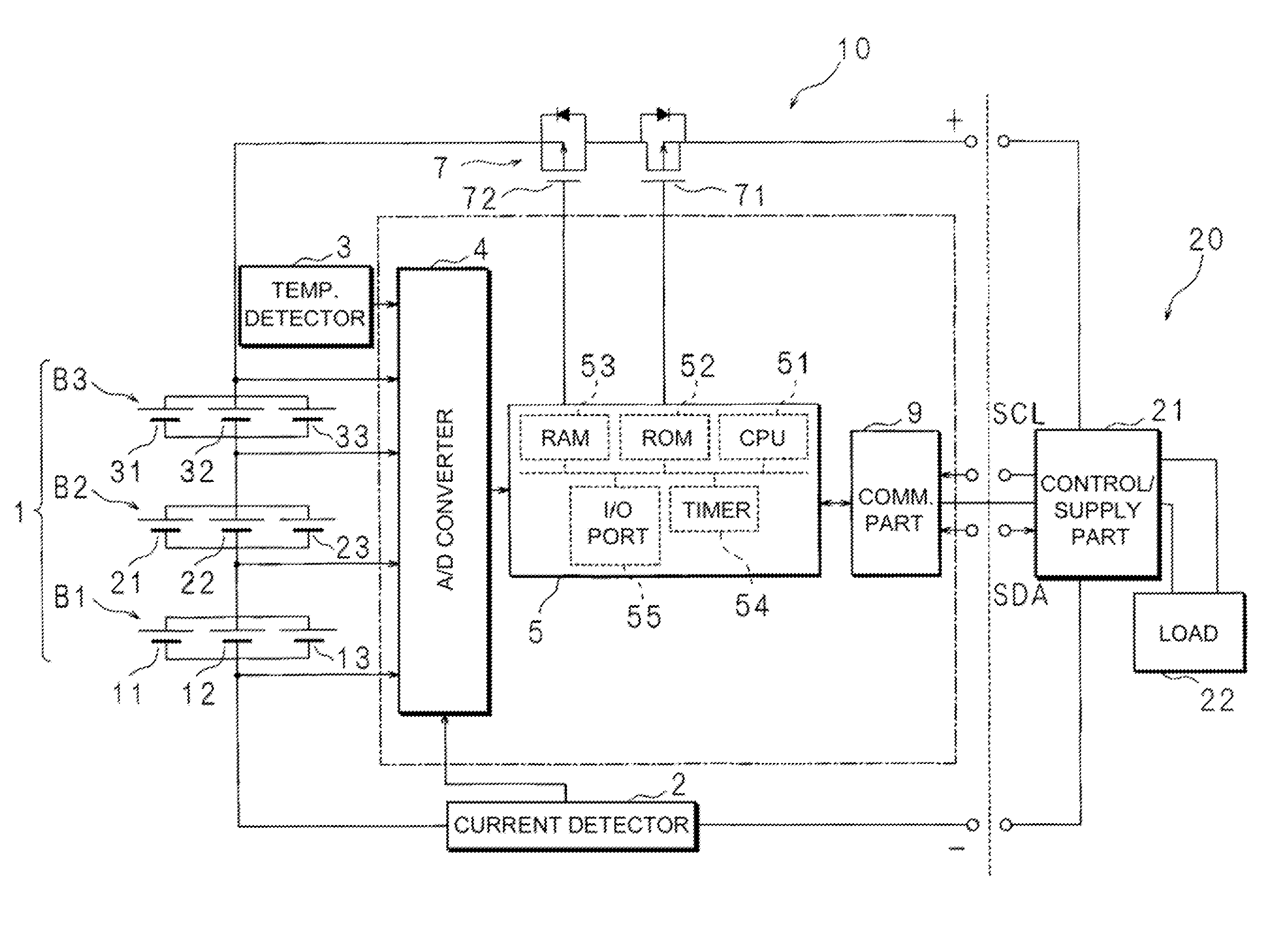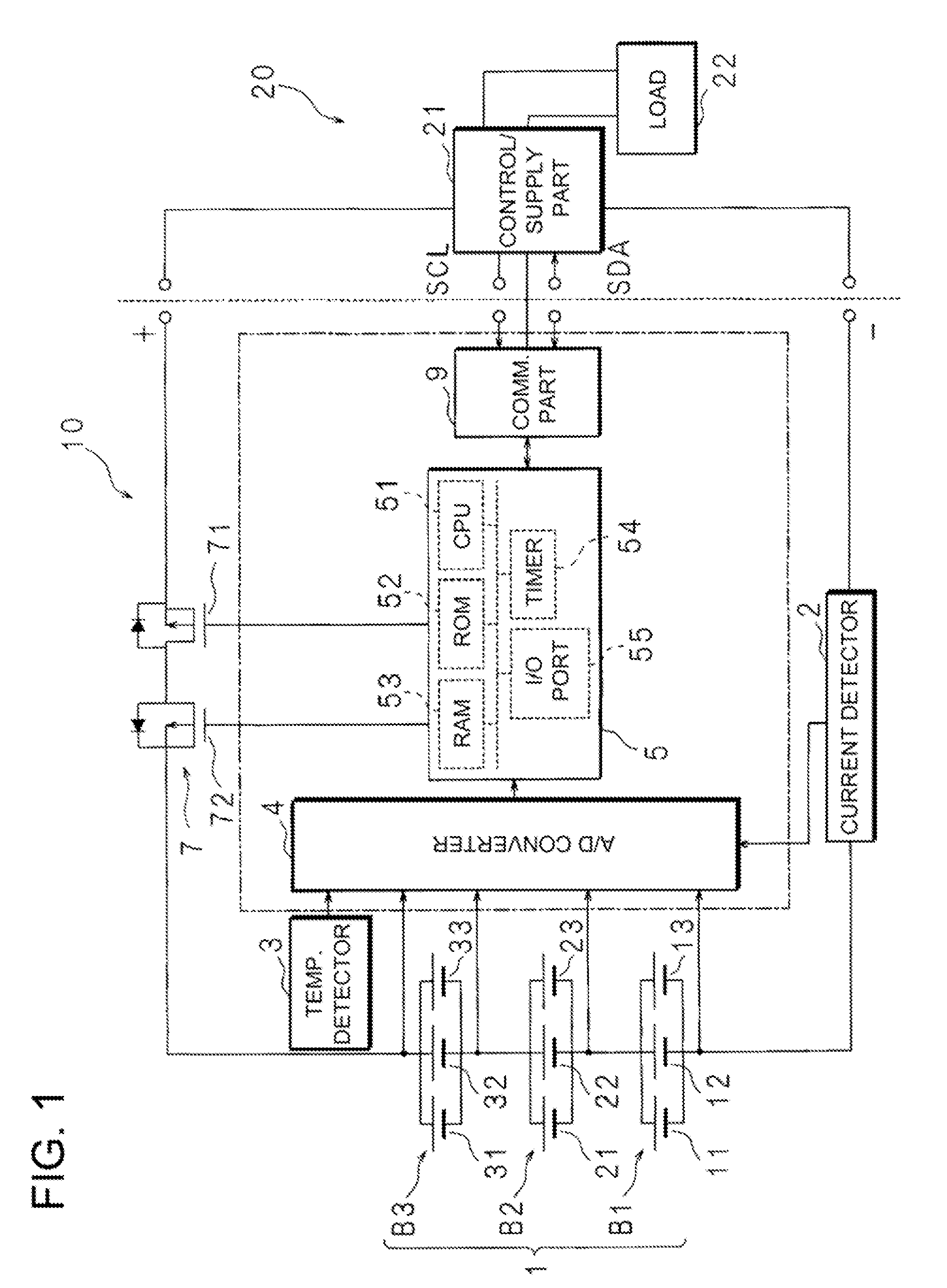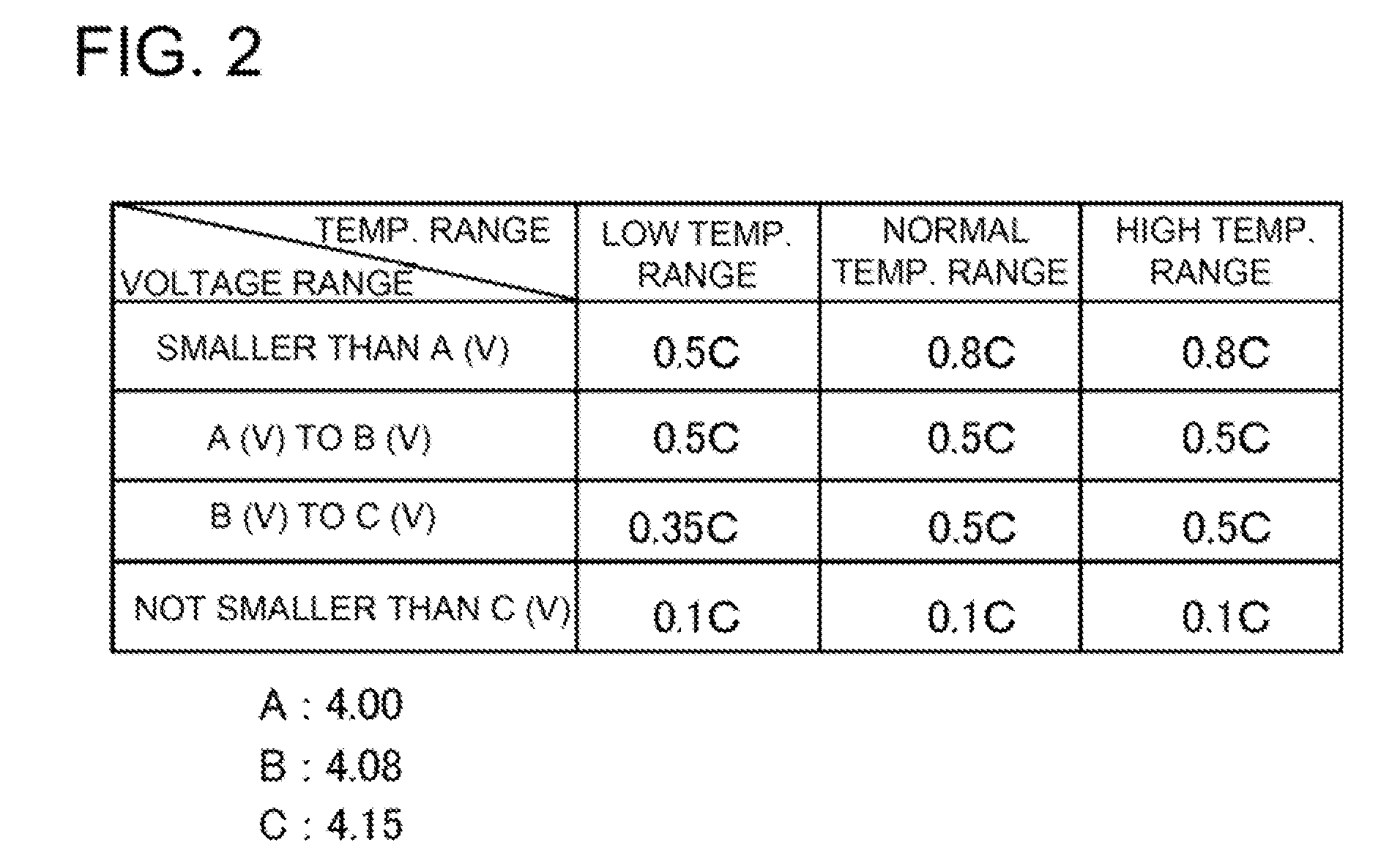Rechargeable battery charging method, rechargeable battery charge controlling device and battery pack
a rechargeable battery and charging method technology, applied in secondary cell servicing/maintenance, electrochemical generators, safety/protection circuits, etc., can solve the problems of battery voltage exceeding the protection voltage, battery voltage of some batteries may exceed the available maximum voltage of the battery, and the target value of the charger is reduced, so as to maximize the characteristics of rechargeable batteries, reduce the target value of the charger
- Summary
- Abstract
- Description
- Claims
- Application Information
AI Technical Summary
Benefits of technology
Problems solved by technology
Method used
Image
Examples
first embodiment
[0052]FIG. 1 is a block diagram showing the exemplary construction of a battery pack according to a first embodiment of the present invention. The battery pack includes a battery pack 10. The battery pack 10 is detachably attached to a load device 20 such as personal computer (PC) and personal digital assistant. The battery pack 10 includes a battery 1. The battery 1 includes battery blocks B1, B2 and B3 that are serially connected to each other in this order. Each of the battery blocks B1, B2 and B3 includes three battery cells of lithium-ion rechargeable batteries 11, 12 and 13, 21, 22 and 23, or 31, 32 and 33 that are connected to each other in parallel to each other. The positive terminal of the battery block B3 and the negative terminal of the battery block 61 serve as the positive terminal and the negative terminal of the battery 1, respectively.
[0053]The voltages of the battery block 61, B2 and 83 independently are provided to an analog input terminal of an A / D conversion por...
second embodiment
[0118]In the first embodiment, a parallel detection manner has been described where it is detected that the voltage of the battery block Bh exceeds the protection voltage and the setting voltage value. On the other hand, in the second embodiment, it detected that the voltage of the battery block Bh exceeds the protection voltage (or the setting voltage value) if the voltage of the battery block Bh exceeds the protection voltage until a predetermined period of time has elapsed after the voltage of the battery block Bh exceeds the setting voltage value (or, if the voltage of the battery block Bh does not exceeds the protection voltage until a predetermined period of time has elapsed).
[0119]FIG. 8 is a flowchart showing the procedure of the CPU 51 that sets a predetermined flag depending on the voltage of battery block Bh of the battery pack 10 according to the second embodiment of the present invention. The following procedure is performed periodically at a period of 250 ms in chargin...
PUM
 Login to View More
Login to View More Abstract
Description
Claims
Application Information
 Login to View More
Login to View More - R&D
- Intellectual Property
- Life Sciences
- Materials
- Tech Scout
- Unparalleled Data Quality
- Higher Quality Content
- 60% Fewer Hallucinations
Browse by: Latest US Patents, China's latest patents, Technical Efficacy Thesaurus, Application Domain, Technology Topic, Popular Technical Reports.
© 2025 PatSnap. All rights reserved.Legal|Privacy policy|Modern Slavery Act Transparency Statement|Sitemap|About US| Contact US: help@patsnap.com



